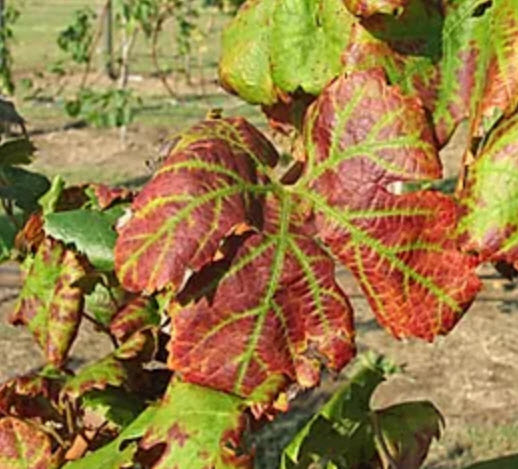Grapevine Leafroll Disease

Photo by Ed Hellman, Texas AgriLife Extension.
Origin: Grapevine leafroll associated viruses are believed to have originated in Eurasia and are now seen in vineyards worldwide. There is evidence that grapevine leafroll disease occurred in the eastern United States in the mid-nineteenth century and spread westward from there.
Many Different Viruses: The term “grapevine leafroll associated viruses” is used to describe a host of different but related viruses. These viruses include grapevine leafroll-associated viruses (GLRaVs) 1–9 and a group of more recently described viruses (GLRaV-Pr, GLRaV-De, and GLRaVCar). Grapevine leafroll-associated virus 3 (GLRaV-3) is the most widespread in the U.S.
Host Range: Grapevine leafroll has been detected in all varieties of wine, table, and raisin grapes. There are no known non-grape hosts. Responses to infection by different GLRaVs or combinations of these by different grape rootstocks and scions vary significantly.
How it Spreads: In the past, most transmission was through the propagation of plant material. However, with plant material certification programs and educational efforts promoting the planting of certified vines, this is no longer true. In addition, there is no evidence of mechanical transmission through pruning or other plant management practices. Vine-to-vine transmission by insect vectors is believed to be the only means of spread in established vineyards. Vine mealybug is one known vector, and there may be others.
Potential Damage: Severity of symptoms and yield losses due to GLRaVs depend on the combination of viruses, cultivars, rootstocks, climate, soil, and viticultural practices. Although some varieties are asymptomatic, no sources of GLRaV resistance have been found in Vitis vinifera cultivars or clones.

